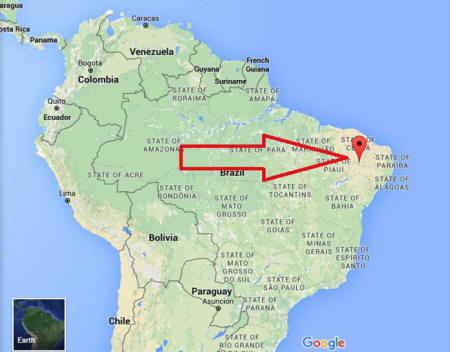|
The World Health Organization (WHO) announced it will convene an Emergency Committee under International Health Regulations on Monday, February 1, concerning the Zika virus 'explosive' spread throughout the Americas.
The virus reportedly has the potential to reach pandemic proportions - possibly around the globe. But understanding why this outbreak happened is vital to curbing it.
As the WHO statement said:
Zika seemingly exploded out of nowhere.
Though it was first discovered in 1947, cases only sporadically occurred throughout Africa and southern Asia. In 2007, the first case was reported in the Pacific. In 2013, a smattering of small outbreaks and individual cases were officially documented in Africa and the western Pacific. They also began showing up in the Americas.
In May 2015, Brazil reported its first case of Zika virus - and the situation changed dramatically.
Brazil is now considered the epicenter of the Zika outbreak, which coincides with at least 4,000 reports of babies born with microcephaly just since October.
When examining a rapidly expanding potential pandemic, it's necessary to leave no stone unturned so possible solutions, as well as future prevention, will be as effective as possible.
In that vein, there was another significant development in 2015.
Oxitec first unveiled its large-scale, genetically-modified mosquito farm in Brazil in July 2012, with the goal of reducing "the incidence of dengue fever," as The Disease Daily reported.
Dengue fever is spread by the same Aedes mosquitoes which spread the Zika virus - and though they,
By July 2015, shortly after the GM mosquitoes were first released into the wild in Juazeiro, Brazil, Oxitec proudly announced they had,
Though that might sound like an astounding success - and, arguably, it was - there is an alarming possibility to consider.
Nature, as one Redditor keenly pointed out, finds a way - and the effort to control dengue, zika, and other viruses, may have backfired dramatically.
The particular strain of Oxitec GM mosquitoes, OX513A, are genetically altered so the vast majority of their offspring will die before they mature - though Dr. Ricarda Steinbrecher published concerns in a report in September 2010 that a known survival rate of 3-4 percent warranted further study before the release of the GM insects.
Her concerns, which were echoed by several other scientists both at the time and since, appear to have been ignored - though they should not have been.
Those genetically-modified mosquitoes work to control wild, potentially disease-carrying populations in a very specific manner. Only the male modified Aedes mosquitoes are supposed to be released into the wild - as they will mate with their unaltered female counterparts.
Once offspring are produced, the modified, scientific facet is supposed to 'kick in' and kill that larvae before it reaches breeding age - if tetracycline is not present during its development.
But there is a problem...
Aedes aegypti mosquito. Image credit: Muhammad Mahdi Karim
According to an unclassified document from the Trade and Agriculture Directorate Committee for Agriculture dated February 2015, Brazil is the third largest in "global antimicrobial consumption in food animal production" - meaning, Brazil is third in the world for its use of tetracycline in its food animals.
As a study by the American Society of Agronomy, et. al., explained,
One of the antibiotics (or antimicrobials) specifically named in that report for its environmental persistence is tetracycline.
Even absent this tetracycline, as Steinbrecher explained, a "sub-population" of genetically-modified Aedes mosquitoes could theoretically develop and thrive, in theory,
She added,
As the WHO stated in its press release,
Incidentally, President Obama called for a massive research effort to develop a vaccine for the Zika virus, as one does not currently exist. Brazil has now called in 200,000 soldiers to somehow help combat the virus' spread.
Aedes mosquitoes have reportedly been spotted in the U.K.
But perhaps the most ironic - or not - proposition was proffered on January 19, by the MIT Technology Review:
|






